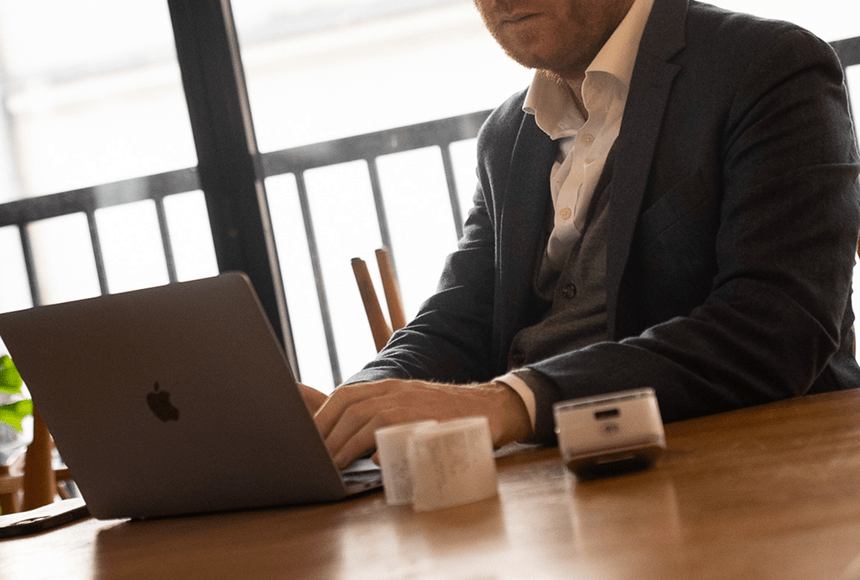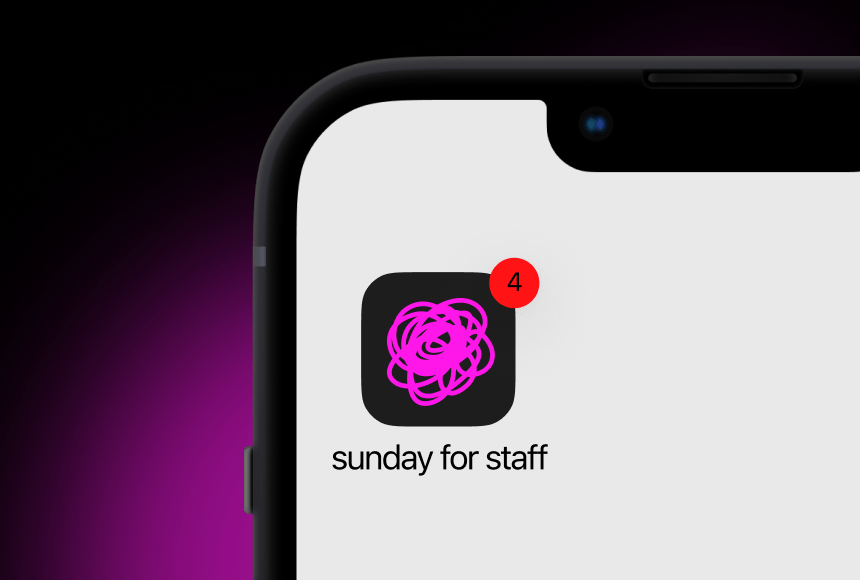
How Strategic Table Turnover Contributes to Superior Staff Performance
Why Table Turnover Matters to Your Revenue and Your Team
Picture this: it’s a busy Friday evening, and your dining room is abuzz with customers eager to enjoy a special meal. The tables are full, and people are smiling. On the surface, everything seems perfect. However, if you take a closer look, you might discover a subtle source of friction—customers waiting just a little too long for their tables, servers racing to keep up, and a general sense of hurry rather than harmony. That feeling often signals that your restaurant’s table turnover rate may not be optimised.
Table turnover might sound like a cold number only relevant to revenue. In reality, it goes far beyond how many covers you serve per day. Table turnover affects how your staff manages tables, how promptly diners receive their meals, and—even more importantly—how happy your team feels at the end of a rush. When a restaurant can efficiently turn tables, it benefits both guests, who get faster service, and staff, who can work more smoothly.
But why does table turnover matter so much? As business owners and managers, you know that every moment a table remains occupied beyond the necessary dining time translates to potential lost revenue. According to BigHospitality, improving efficiency by just 10% in your seating management can significantly increase daily takings, especially during prime hours. But it’s not only about the numbers; a well-executed table turnover strategy lights up every corner of your restaurant with a sense of comfort, efficiency, and satisfaction. To create this positive environment, you need to pay attention to the people who drive it all: your staff.
Connecting Table Turnover and Staff Management
At first glance, table turnover and staff management might appear to be two separate topics—one focuses on customer flow, the other on internal operations. Yet these aspects of your restaurant ecosystem are deeply intertwined.
Your staff is the primary driver of the dining experience. It’s the servers who set the tone for guest interactions, the kitchen team who swiftly prepare orders without compromising on quality, and the managers who coordinate everything from stock inventory to last-minute group bookings. When the team is well-trained, well-supported, and happy, table turnover naturally improves.
Why? Because an engaged staff anticipates guest needs faster, processes orders more accurately, and handles payments without delay. These factors all reduce waiting time. As a result, your guests have a smoother dining experience and you can seat new customers sooner. Conversely, if employees are undertrained or overwhelmed, bottlenecks emerge. Delayed service times, payment confusion, or even disagreements over splitting the bill can slow everything down—lowering overall table turnover and creating stress for everyone.
Staff Training: The Bedrock of Efficient Table Turnover
To ensure your restaurant achieves a seamless flow, it’s crucial to invest in staff training. But what does “training” mean in this context? It’s not just about teaching someone how to hold a tray or memorise a menu. It’s about guiding them to master the fine details that ensure a delightful experience for your guests.
Here are a few areas where targeted training can make a notable difference:
- Menu Mastery: If the front-of-house team is deeply familiar with every dish and special, they can answer guest questions immediately, reducing dithering around orders.
- Customer Communication: Quick, polite greeting, clarifying any dietary restrictions, and recommending dishes or drinks can shave minutes off each table’s decision-making time.
- Team Collaboration: A strong synergy between the back and front of house helps orders go out swiftly, with fewer mistakes.
- Payment Efficiency: Training staff to handle diverse payment methods, including modern solutions like scanning a QR code at the table, speeds up the turnover process.
By investing in these and other areas of training, you empower your team to work quickly without sacrificing warmth or quality. That, in turn, leads to happier customers who feel well-looked after and are more willing to leave that extra tip—and perhaps a favourable review online.
How Technology Accelerates Both Turnover and Team Support
When we talk about making things more efficient, technology naturally comes into the conversation. Many restaurant owners worry that technology might eliminate the human touch that makes dining out special. In truth, the right tools can free your staff to devote more energy to meaningful interactions with guests.
One technological solution that some restaurants have embraced is the integration of digital payment platforms. A solution like sunday allows customers to scan a QR code to pay their bill in seconds, add a gratuity if they wish, and even share a review on Google. This approach minimises the time servers spend dropping off the bill, collecting payment, and processing tips manually.
For example, suppose your typical staff member handles the payment process for six or seven tables an hour during peak times. If each transaction takes an average of five minutes from presentation to completion, you’re looking at nearly half an hour spent purely on processing checks for each staff member. By using a streamlined payment method, you can save up to 15 minutes per table turnover across a busy shift. And by letting technology do some of the heavy lifting, your team has more bandwidth to be attentive to guests’ needs—like checking on that last glass of wine or dessert order.
Of course, it’s not only about payments. Technology can also apply to:
- Inventory tools that alert your kitchen staff and servers to which items are in limited supply.
- Online booking platforms that seamlessly integrate with your seating plan for smoother guest flow.
- Table management systems that track how long tables have been occupied and anticipate when they might free up.
When used intelligently, each of these technologies can transform your restaurant’s day-to-day operation, leading to fewer hold-ups, happier staff, and, ultimately, a more profitable establishment.
A Case Study: The Rose & Crown’s Journey
Let’s illustrate the impact effective table turnover and staff management can have by exploring a fictional, yet typical, British pub scenario: The Rose & Crown.
The Rose & Crown is a friendly gastropub in a small town near London. They serve a mix of British staples and continental dishes. Here was their situation:
- They had an average table turnover time of around 70 minutes per table.
- Guests regularly waited 15 to 20 minutes for a table at peak times.
- Staff morale was slipping because of long hours and a feeling of constant pressure.
The management decided to invest in:
- More thorough training: They instilled a standard greeting and menu introduction protocol, ensuring staff could handle orders confidently and quickly.
- Updated technology: By introducing a QR-code payment solution at each table, The Rose & Crown cut down the time guests spent waiting to pay by a staggering 40%.
- Shift restructuring: Management realigned shifts so that more staff were present during the busiest periods to handle surges.
The result? Table turnover dropped from 70 minutes down to about 55 minutes. Over the course of an evening service, those 15 minutes saved per table meant accommodating more covers—raising daily revenue by an estimated 20%. Just as importantly, staff felt more relaxed and less rushed, which contributed to higher overall job satisfaction and lower staff turnover.
Linking Better Staff Management to Lower Employee Turnover
We talk a lot about “table turnover,” but there’s a second kind of turnover that can significantly affect your business: staff turnover. While these two metrics may seem unrelated, a restaurant’s ability to effectively manage table flow often correlates with how staff feel about their work.
High staff turnover can disrupt team dynamics and training consistency. When experienced staff members leave, you lose valuable know-how and must invest in recruitment and training all over again. An overstretched staff handling chaotic table management every night is more likely to seek other opportunities. The stress can be overwhelming, especially if they receive minimal support from management.
On the other hand, when you refine your table turnover strategy, you also streamline each stage of service. Fewer frantic tasks, clearer procedures, and digital solutions that remove repetitive tasks—like reentering orders—give staff more mental room to do the job they love. This positive sense of control can build loyalty and lower the likelihood of staff departures.
Practical Tips for Synchronising Table Turnover and Staff Management
Let’s delve into specific measures you can apply in your own establishment:
1) Establish Clear Seating Protocols
Nobody likes hearing “There’s a 45-minute wait” only to see an obviously free table. Sometimes these gaps happen because of a miscommunication or because a table is reserved but the time slot isn’t precise. Consider implementing a digital table management system that automatically tracks table statuses—occupied, billed, needs cleaning, or ready. Your hosts or hostesses can then seat guests in a matter of seconds rather than scanning the dining room in confusion.
2) Allocate Roles Wisely
One proven method is dividing responsibilities clearly. If you have enough staff to handle your peak times, assign hosts to seat guests and run waitlists separately, servers for taking orders, and designated staff for clearing and resetting tables. This approach prevents team members from getting pulled in too many directions.
3) Encourage Cross-Training
Even though specialisation can be effective, cross-training staff members can help fill unexpected gaps, especially during rush service. For example, a bartender can temporarily handle seating if the queue is getting long, or a server can step in to help the kitchen expedite plates. This flexibility not only helps prevent bottlenecks but also fosters a strong sense of teamwork across the restaurant.
4) Adopt Digital Payment Solutions
As mentioned, queueing for the bill can slow table turnover significantly. Using a platform like sunday allows guests to settle up quickly on their phones, which leads to higher table turnover and happier customers. Staff can still provide personal service—just without the tedious back-and-forth of running payment cards to the till or handling physical receipts.
5) Consider Timed Promotions
While you don’t want to rush customers, you might experiment with strategies to ensure a steady flow, such as evening discounts that start after a certain time. Or, offer a special lunch menu that can be served promptly, emphasising quicker dishes for guests on a tight schedule. This not only gives diners what they want—fast, tasty meals—but also helps free up tables sooner.
6) Maintain Transparent Communication
An informed staff is an efficient staff. Kick off shifts with quick team meetings, clarifying any updates: special menu items, table reservations, or events happening in the area that could affect footfall. This regular communication from managers sets the tone for a unified approach to service.
Measuring Progress with a Simple Table
Below is a simple illustration of how average table turnover time impacts daily revenue. These numbers are hypothetical but demonstrate the potential financial lift of running a more efficient operation:
| Average Table Turnover (minutes) | Estimated Daily Revenue (£) |
|---|---|
| 70 | 2,000 |
| 60 | 2,250 |
| 55 | 2,400 |
| 50 | 2,600 |
The exact figures may differ in your establishment, but the principle remains: reducing even five or ten minutes from the average turnover time can produce a noticeable increase in daily earnings. Combine that increase with a happier staff, and the result is a stronger, more sustainable business model.
Staff Well-Being and the Customer Experience
It’s easy to get swept up by conversation about numbers and efficiency. However, the truth is that your staff’s well-being plays just as vital a role as any metric you can track. Studies—such as Deloitte’s research on the future of restaurants—highlight that restaurant teams who feel empowered and respected at work tend to provide better service, maintain higher morale, and stay in their roles longer.
What does any of that have to do with table turnover? Everything. A stressed or overworked team can sour the atmosphere in your establishment, which causes tension and slower service, resulting in lower table turnover. On the other hand, a well-cared-for team handles the daily rush with more grace. They work smoothly, they greet customers warmly, and their positivity spreads throughout the dining area. People naturally sense genuine hospitality, and this intangible factor can shape guests’ entire perception of your restaurant.
When your staff counts on a well-structured shift pattern, simpler ways to handle tasks like taking orders or closing out bills, and the knowledge that management values them, they stop counting the hours until the shift ends. That’s when you see the real magic of hospitality—when a quick table turnover happens not because the staff rushed diners, but because your entire service is sharp, efficient, and welcoming.
Embracing Digital Solutions for Ongoing Success
Restaurant owners who remain hesitant about going digital might worry about losing that personal warmth. But digitisation doesn’t need to replace or overshadow human input. The goal is to streamline repetitive tasks so that your people can focus on the interpersonal aspect of dining out. By incorporating user-friendly payment solutions, inventory trackers, or reservation apps, you free your staff to engage in the parts of the job that elevate a guest’s experience—genuine conversation, expert menu advice, or small personal touches that transform a meal out into something memorable.
When staff members trust that problems can be resolved swiftly and that certain aspects of the job (like billing) have been simplified, they become more enthusiastic about the service. This job satisfaction feeds back into how smoothly your restaurant runs, thus improving table turnover rates further. It’s a cycle worth nurturing: better tools, better service, better turnover, better revenue, and happier employees who stick around.
Keep Improving and Celebrating Small Wins
No matter how successful your first changes might be, restaurant management is a journey of continuous evolution. After you’ve rolled out new strategies for table turnover and staff management, observe the results. Collect real-time feedback from your servers and managers; ask them what went well and what could be improved. Often, the smallest obstacles can have a disproportionate effect on the flow of your dining room—like that recurring problem with the coffee machine or ongoing confusion about which server covers which zone.
When you do see improvements—like fewer guest complaints, an increase in positive online reviews, or simply a calmer atmosphere—make sure to celebrate those achievements with the entire team. Positive reinforcement goes a long way toward building a workplace culture that’s resilient and open to continuous refinement.
Frequently Asked Questions
How fast should my table turnover be?
It varies based on your restaurant’s style of cuisine, portion sizes, and atmosphere. A casual establishment might aim for 45–60 minutes per table, while a fine dining restaurant might have a longer timeframe. The key is to align your turnover strategy with your concept and guest expectations.
How do I avoid making customers feel rushed?
Focus on efficient service, not speed for its own sake. Provide clear menus, seamless ordering, and quick payment options. If patrons feel well looked after and not pressured to vacate their table, they won’t mind a slightly brisker pace. Warm communication is crucial: let guests know you’re there for them, rather than scurrying them out.
Does technology reduce personal interaction?
Not at all, if used wisely. Technology can take on repetitive tasks—like sending and collecting bills—so your staff can concentrate on more personal interactions, such as greeting guests by name, suggesting wine pairings, or discussing favourite dishes. Balancing tech efficiency with genuine hospitality is your best bet.
How can I measure the ROI of improving table turnover?
Track metrics like average turn times, wait times, and revenue per shift before and after implementing changes. Compare findings to your investment in staff training, technology, or additional hires. By monitoring these figures over several months, you’ll see whether your restaurant’s profitability and guest satisfaction have increased.
What kind of staff feedback should I look for?
Ask your team about pain points in the flow of service: Are orders coming through late? Do they struggle to get to every table promptly? Do they have enough time for breaks and personal connections with guests? Employees who see daily operations up close often have the best suggestions for small but transformative tweaks.
Can a digital payment solution really make a big difference?
Yes. Digital payment solutions can save several minutes per table, which adds up significantly over a full shift. It especially helps in peak periods, where queues for the bill can cause congestion. By eliminating that wait, you can speed up the turnover without compromising your guests’ dining experience.
Fuel Your Future with Exceptional Teamwork
Whether you run a local café or a bustling metropolitan bistro, the interplay between table turnover and staff management shapes everything you do. Streamlining your service doesn’t have to mean stripping away the personal touch—in fact, it can release you to focus more on the high-value aspects of hospitality. Train your staff well, equip them with processes and technology that support their efforts, and keep refining based on what you see and hear. When your restaurant runs like a well-choreographed performance, both your guests and your team will carry that sense of satisfaction far beyond your doors.
Find out more today
Drop us your details below and we’ll reach out within the next 24
Get the full, detailed picture.
sunday elevates your business with insightful data, instant feedback and precise analytics.




